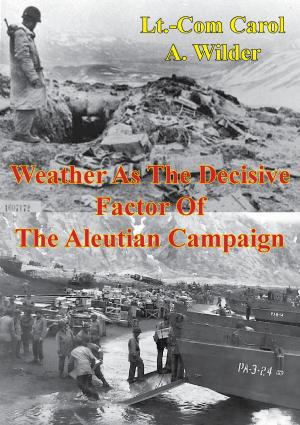The Coldstream Guards, 1914-1918 Vol. I [Illustrated Edition]
Nonfiction, History, Military, World War I, Germany, British| Author: | Lt. Col. Sir John Foster George Ross-of-Bladensburg | ISBN: | 9781786250995 |
| Publisher: | Verdun Press | Publication: | November 6, 2015 |
| Imprint: | Verdun Press | Language: | English |
| Author: | Lt. Col. Sir John Foster George Ross-of-Bladensburg |
| ISBN: | 9781786250995 |
| Publisher: | Verdun Press |
| Publication: | November 6, 2015 |
| Imprint: | Verdun Press |
| Language: | English |
Includes 27 maps
“History of the four active service battalions in the Great War with details of officers’ services during the war.
The Coldstream Guards had three battalions in August 1914, all three committed to the BEF: the 1st Battalion was in the 1st (Guards) Brigade, 1st Division; the 2nd and 3rd were both in 4th Guards Brigade, 2nd Division. As soon as war broke out a Reserve battalion (the 4th) was formed which provided drafts of 16,860 all ranks during the course of the war. In July 1915 a further battalion was raised as the Guards Pioneer Battalion for the Guards Division which was then being formed. This battalion was numbered 4th and the reserve battalion became the 5th. In all the Regiment suffered 14,137 casualties of which the dead numbered 180 officers and 3,860 other ranks. Seven VCs were won and 36 Battle Honours awarded. Volume I takes the story to the end of the Somme offensive, volume II begins with the situation at the end of 1916 after the Somme and carries through to the return of the Regiment to London in March 1919 and the Royal Review on the 22nd of that month when the Guards Division marched past their Colonel in Chief, the King.
This is a well written history in which the author gives a good and detailed account of the Regiment’s actions, often with casualty details following various battles and nominal rolls of officers present for duty. He also comments on the wider issues, some of which had nothing to do with the Coldstream, not only on higher strategy on the Western Front but also on other campaigns such as Gallipoli, Mesopotamia, Palestine and Italy where no Guards battalions served, and it is in discussing these wider issues that he is sometimes frankly critical, allocating blame where he feels it belongs.Print ed.
Includes 27 maps
“History of the four active service battalions in the Great War with details of officers’ services during the war.
The Coldstream Guards had three battalions in August 1914, all three committed to the BEF: the 1st Battalion was in the 1st (Guards) Brigade, 1st Division; the 2nd and 3rd were both in 4th Guards Brigade, 2nd Division. As soon as war broke out a Reserve battalion (the 4th) was formed which provided drafts of 16,860 all ranks during the course of the war. In July 1915 a further battalion was raised as the Guards Pioneer Battalion for the Guards Division which was then being formed. This battalion was numbered 4th and the reserve battalion became the 5th. In all the Regiment suffered 14,137 casualties of which the dead numbered 180 officers and 3,860 other ranks. Seven VCs were won and 36 Battle Honours awarded. Volume I takes the story to the end of the Somme offensive, volume II begins with the situation at the end of 1916 after the Somme and carries through to the return of the Regiment to London in March 1919 and the Royal Review on the 22nd of that month when the Guards Division marched past their Colonel in Chief, the King.
This is a well written history in which the author gives a good and detailed account of the Regiment’s actions, often with casualty details following various battles and nominal rolls of officers present for duty. He also comments on the wider issues, some of which had nothing to do with the Coldstream, not only on higher strategy on the Western Front but also on other campaigns such as Gallipoli, Mesopotamia, Palestine and Italy where no Guards battalions served, and it is in discussing these wider issues that he is sometimes frankly critical, allocating blame where he feels it belongs.Print ed.
![Cover of the book The Coldstream Guards, 1914-1918 Vol. I [Illustrated Edition] by Lt. Col. Sir John Foster George Ross-of-Bladensburg, Verdun Press](https://www.kuoky.com/images/2015/november/500x500/9781786250995-9rTG_500x.jpg)



![Cover of the book FLYING FURY: Five Years In The Royal Flying Corps [Illustrated Edition] by Lt. Col. Sir John Foster George Ross-of-Bladensburg](https://www.kuoky.com/images/2014/june/300x300/9781782892168-Eheb_300x.jpg)

![Cover of the book The Coldstream Guards, 1914-1918 Vol. II [Illustrated Edition] by Lt. Col. Sir John Foster George Ross-of-Bladensburg](https://www.kuoky.com/images/2015/november/300x300/9781786251008-rNDq_300x.jpg)

![Cover of the book The Fifth Army In March 1918 [Illustrated Edition] by Lt. Col. Sir John Foster George Ross-of-Bladensburg](https://www.kuoky.com/images/2014/august/300x300/9781782894834-9qa1_300x.jpg)






